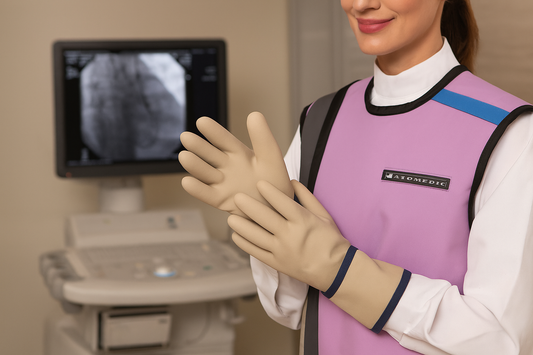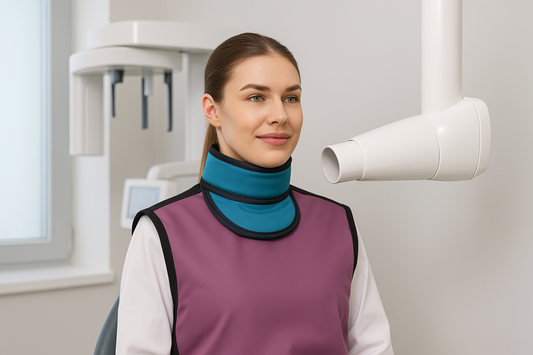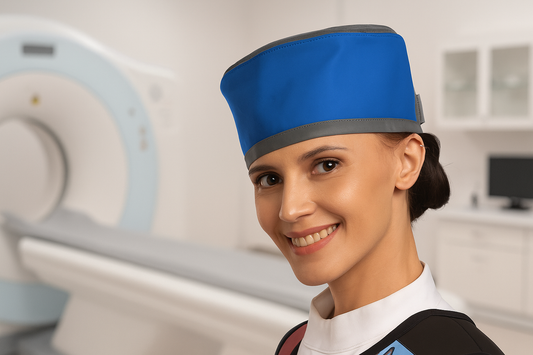Dental imaging is an essential part of modern oral healthcare. From routine check-ups to orthodontic planning and surgical evaluations, X-rays are often performed multiple times throughout a patient’s life. While the radiation doses are relatively low, the thyroid gland is especially sensitive to exposure. Protecting it is not only a matter of compliance with best practices but also a step that builds trust with patients.
The Sensitivity of the Thyroid Gland
Located at the base of the neck, the thyroid regulates growth, metabolism, and overall hormonal balance. Even low-dose scatter radiation can affect this gland, particularly in children and adolescents whose tissues are more radiosensitive.
Because of its proximity to the head and neck region, dental X-rays pose a higher risk of thyroid exposure compared to imaging in other parts of the body. Shielding with a thyroid collar is a simple and effective safeguard.
What Do Dental Guidelines Recommend?
Professional associations, including the Canadian Dental Association and the American Dental Association, support the use of thyroid collars during dental radiographs—particularly for children and teens. Many dental practices have made this protection a standard part of care.
However, in reality, usage is inconsistent. Some clinics always use them, others reserve them for paediatric patients, and a few omit them entirely, citing the already low dose of modern digital imaging. The common ground is this: whenever possible, thyroid collars are strongly recommended, especially for patients likely to receive multiple scans.
Apron, Collar… or Vest?
In dentistry, the most widely used combination is a lead apron paired with a thyroid collar. Together, they protect both the torso and the thyroid, addressing the two most sensitive areas of concern.
Some clinics have moved away from routine aprons for adults, given the low exposure of digital X-rays. Still, many continue to use aprons and collars together, since patients often expect visible protection.
What about vests? Unlike aprons, radiation protection vests are designed for staff, not patients. They are built to protect healthcare professionals who work around scatter radiation for long hours, such as in hospitals and interventional suites. Patients, by contrast, are exposed only briefly during a dental X-ray. For them, a lightweight apron and, more importantly, a thyroid collar are appropriate.
Key Benefits of Using Thyroid Collars in Dentistry
-
Direct Thyroid Protection: Blocks scatter radiation from reaching the gland.
-
Comfortable for Patients: Modern designs are lightweight and secure.
-
Best Practice for Children: Radiosensitivity is highest in paediatric patients, making collars essential.
-
Trust and Transparency: Demonstrates commitment to patient safety, reassuring parents and patients alike.
What to Look For in a Thyroid Collar
-
Protective Rating: Measured in millimetres of lead equivalence.
-
Comfort and Fit: Adjustable closures provide a snug yet comfortable experience.
-
Ease of Cleaning: Materials must withstand regular disinfection.
-
Durability: Reinforced seams and strong outer fabric ensure long service life.
Frequently Asked Questions
Do adults need thyroid collars during dental X-rays?
Yes, especially if they receive regular imaging. While risks are lower than in children, the thyroid is still radiosensitive.
Do dental patients wear vests instead of collars?
No. Vests are designed for healthcare staff working long hours in high-radiation environments. For patients, aprons and collars are sufficient.
Are thyroid collars uncomfortable?
Not at all. Modern designs are lightweight, soft, and secure.
Do thyroid collars interfere with imaging?
In most cases, no. For cone-beam CT scans, adjustments may be needed to avoid interference.
Helping Dental Professionals Choose Wisely
For dental teams committed to safety, a thyroid collar is an essential part of patient protection. It reflects best practice, builds trust, and ensures that the most radiosensitive gland is shielded during imaging.
The CavoMed Thyroid Collar is designed for safety, comfort, and durability—helping practices meet high standards of care while reassuring patients that their health comes first.




